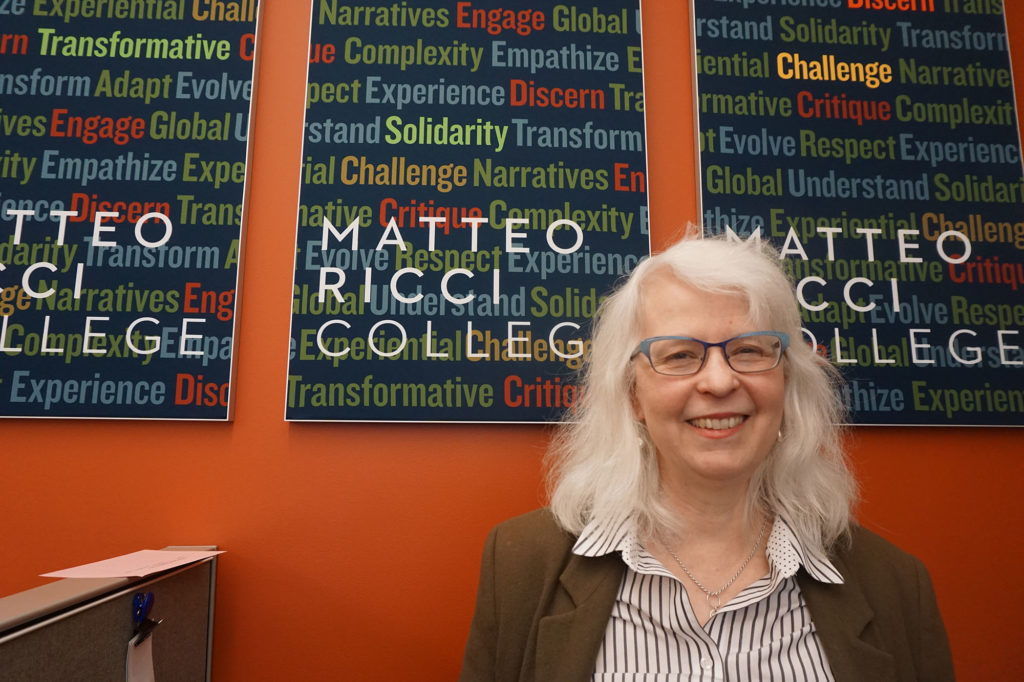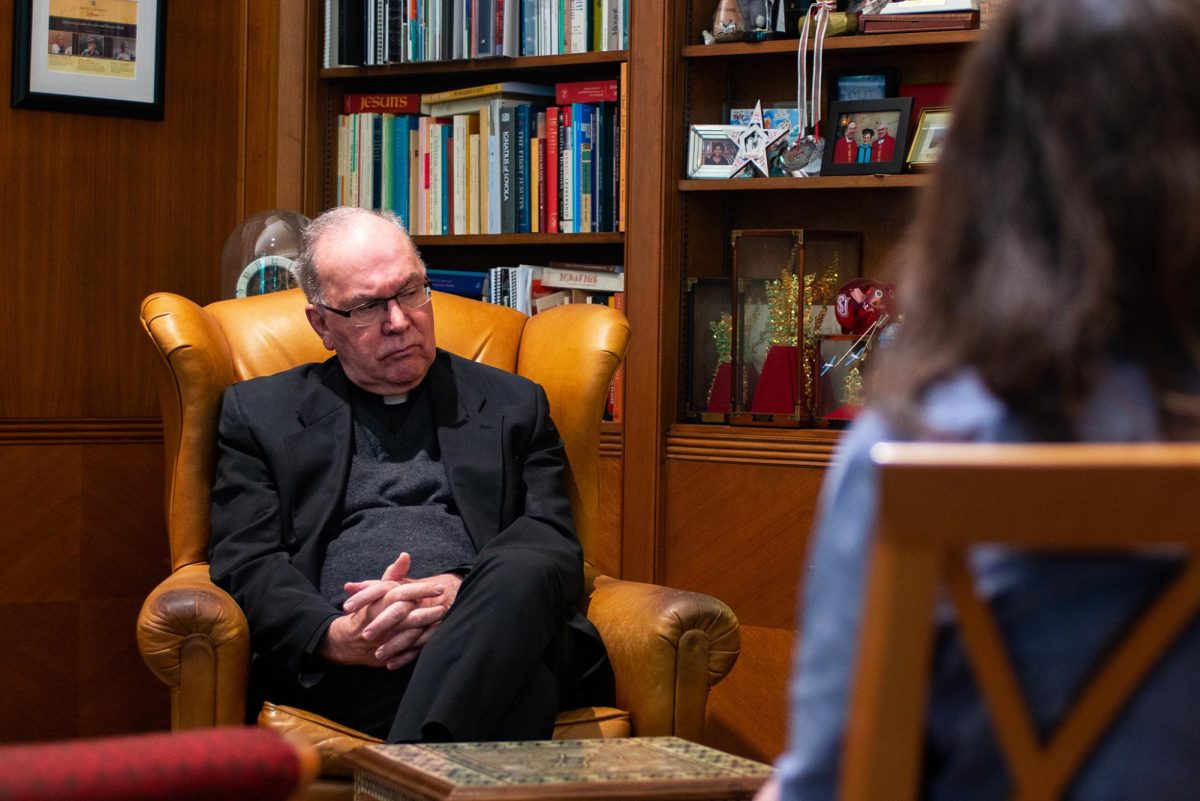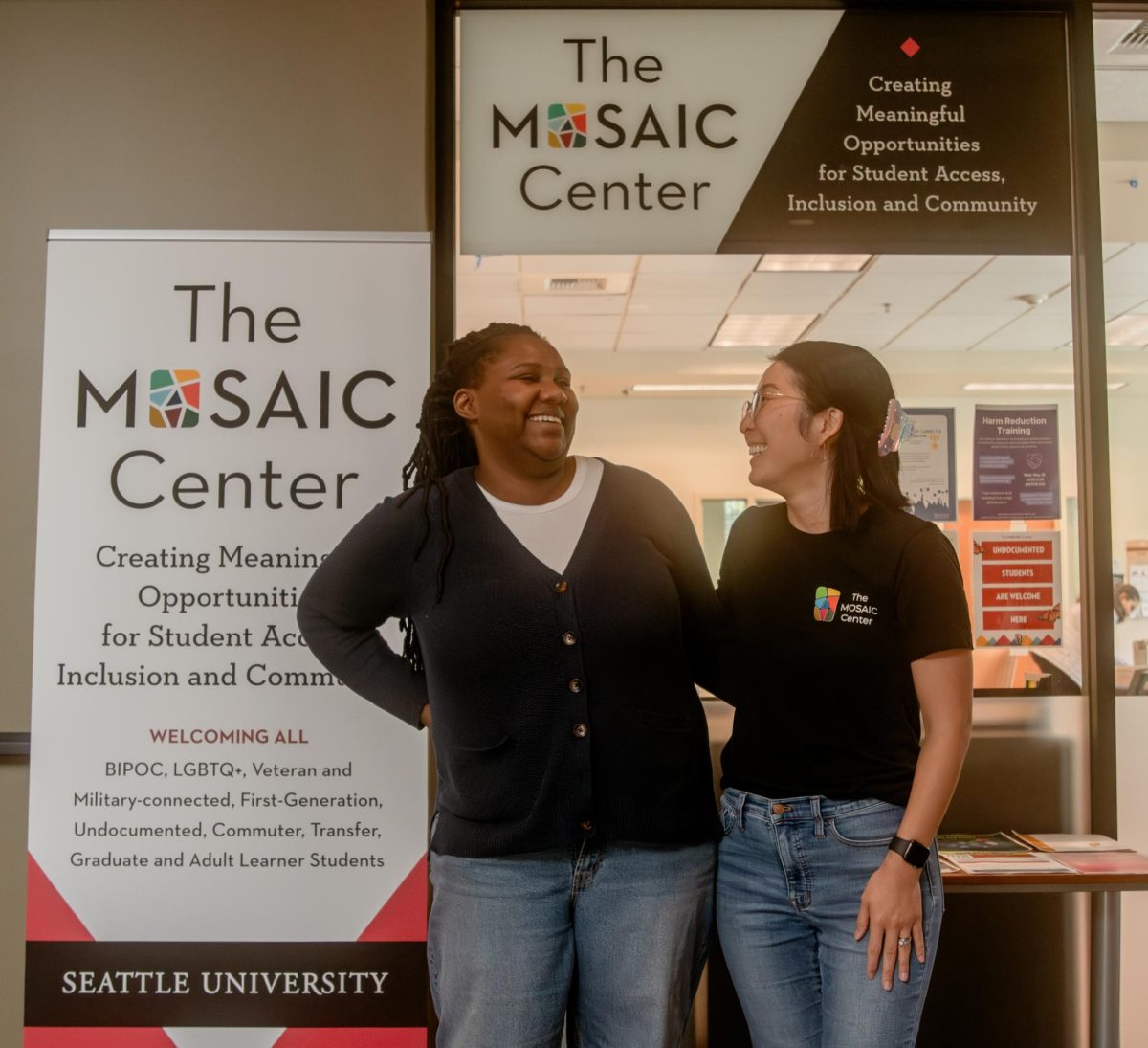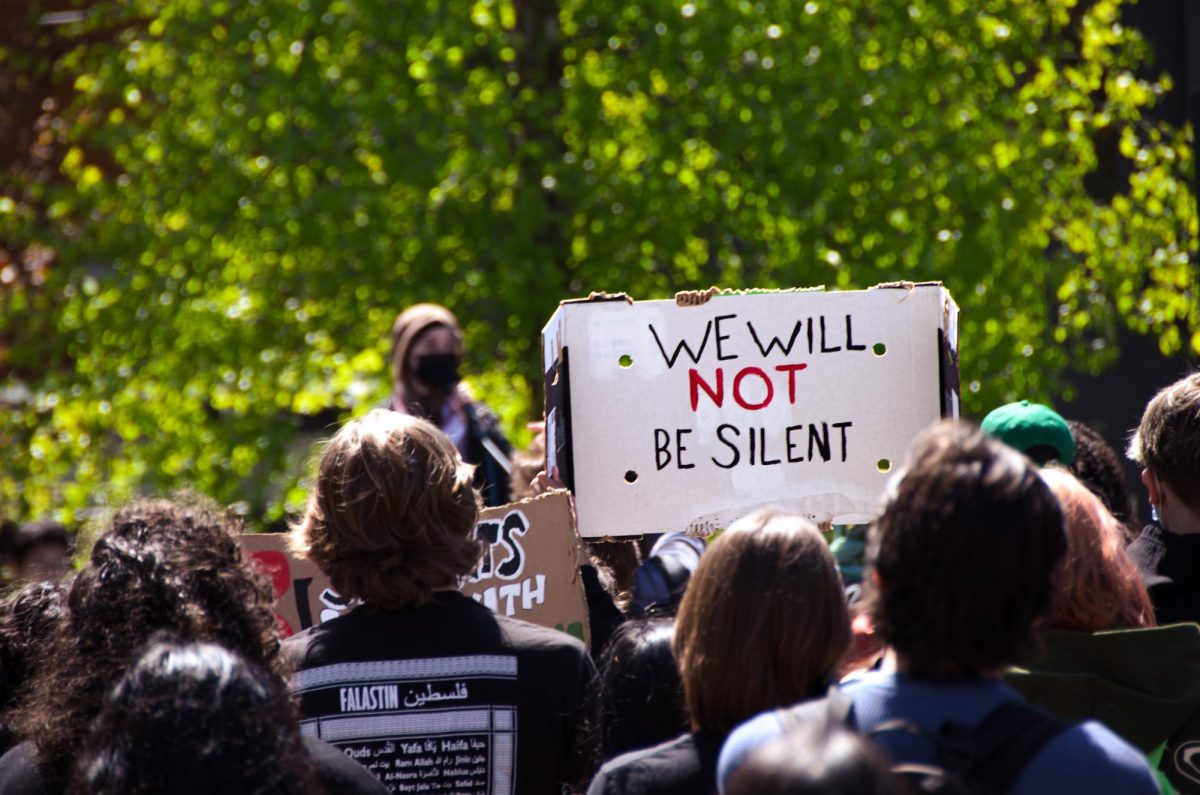Interim Provost Bob Dullea announced last May that, among a laundry list of changes, Matteo Ricci College (MRC) would merge with the College of Arts and Sciences by the summer of 2018. People all across campus–ranging from professors in MRC to those who have protested the college–had been advocating for this institutional change for years.
The announcement led some in the Seattle University community to give a collective sigh of relief. It seemed that finally, after a year in flux, the dust was settling around the so-called experimental college that found itself in a cloud of uncertainty for 12 months prior.
But it looks like now, as new details emerge, those involved in the merger have a message for the rest of the campus community: don’t hold your breath.
Moving an entire college–and one with a complex history like Matteo Ricci’s–brings about a host of challenges unique to Seattle U.
“It’s not that simple,” Chris Paul said, Chair of the Communication Department and President of the Faculty and Staff Senate at Seattle U, speaking about the complexity of merging two colleges. “There could be costs that we just haven’t accounted for. And that would be bad. Because we’re not gonna be able to undo it.”
Emily Lieb, a professor in MRC and co-chair of the Matteo Ricci College TaskForce—which has since disbanded after recommending changes to the provost last spring—
shared a similar perspective. She too is uncertain that the merger is ideal in its current form.
“We need to be thoughtful, careful, cautious,” Lieb said. “Because you can only make this decision one time.”
The proposed merger has been likened to a “Pandora’s Box.”
Once it’s done, there’s no turning back. This attitude stands in contrast to what was previously embraced as a fresh start for the college which was still reeling from the 24-day sit-in that challenged racism, sexism andEurocentrism ingrained within its culture, curriculum and climate.
So what happened between Bob Dullea’s email last May and today’s current state of uncertainty? What other proposed changes have been revoked since? And what does this mean for the broader university community?
◊◊◊
Comprised of just 145 students making up three majors, MRC is by far the smallest college on campus. In comparison, the College of Arts and ciences is nearly 14 times the size of MRC with a population of more than 2,000 students.
Matteo Ricci College has three majors: Humanities, Humanities for Teaching and Humanities for Leadership. In addition, it has its own unique core curriculum.
Since the beginning of the 2018 academic year, the leadership degree has been put on hold due to low enrollment; the humanities degree—which only accepts students from one of five selected Catholic high schools in the region— has struggled to attract and retain students in recent years. The teaching degree competes with a similar teacher preparation program that already exists in the College of Arts and Sciences.
Faculty have expressed concerns over how to smoothly connect the MRC puzzle piece with Arts and Sciences.
“One of the major reservations is, how does the curriculum integrate?” said professor Audrey Hudgins, who teaches in MRC. “There’s discussions of how there’s in some cases concerns of duplicate of programs.”
In addition to questions pertaining to the three degree programs, there have been other notable shifts in conversations between last spring and now, especially pertaining to tenure.
Aside from the two-year-old School of New and Continuing Studies, every college on Seattle U’s campus has established tenure lines.
Put simply, it is agreed upon by many in academia that faculty tenure—or at least reasonable access to the tenure track—is a right.
Matteo Ricci College lacks tenure lines due, in large part, to historical reasons. The small Jesuit college has existed since 1975. Initially, it was only affiliated with Catholic high schools in the region.
Over time, as it developed into a more formal, degree-granting program, Matteo Ricci “borrowed” faculty from other colleges on campus to teach courses.
The colleges from which these faculty were being borrowed had pre-existing tenure lines. As the borrowed faculty developed into full-time MRC faculty, tenure fell by the wayside.
The 2016 sit-in was led by the Coalition, a group of Seattle U students who worked to change the structure of MRC and Seattle U by upending oppressive structures in the college.
One of their demands was for faculty to be granted tenure. In response to demand, the Matteo Ricci College task force recommended tenure in their formal recommendations to the provost last spring.
At the time of the provost’s response, it seemed that the establishment of tenure lines was a guarantee.
“It is appropriate and important that [MRC] include tenure track lines, and, within an appropriate timeframe, tenured faculty positions,” Dullea wrote in his formal response to the recommendations.
But when discussing the prospect of establishing tenure lines during an interview with the Spectator, Dullea struggled to give a clear answer, especially when outlining a timeline for doing so.
“We need to do it the right way,” Dullea said. “We have to have a sufficiently clear understanding of what we are tenuring into in order to make sure that we’re tenuring the right individuals with the right standards and expectations.”
From his perspective, “the right solution over time” is to incorporate tenure in MRC. But he is hesitant to do so until he has a clear idea of what form the college will take and whether it will remain independent or merge with A and S.
Even if all goes as planned and MRC merges with A and S in July of 2018, Dullea said he can’t say for certain that tenure lines would be established anytime in the foreseeable future.
This confusion surrounding tenure appears to contradict what faculty in MRC had understood to be a clear- cut plan last year.
“Coming out of the sit-in, there was some expectation or ask that there’d be tenure track positions, and that sort of idea seems to be faltering a little bit,” Hudgins said.
“There’s insecurity associated with that,” Hudgins said. “From my personal financial position it’s not as much of a consideration, but there are other people that live paycheck- to-paycheck.”
Even if tenure lines are to be established in MRC, current full- time MRC faculty won’t necessarily ll those positions. In fact, it might not even be Seattle U faculty at all.
According to the provost, the tenure positions would be filled through national hiring searches. This is cause for concern among MRC faculty.
“Well, wait a minute, it’s not as if there aren’t humanities professors on every street corner looking for jobs,” Hudgins said.
She acknowledged the importance of inclusion and diversity in the hiring process, which could be achieved through a national search like the provost suggested. On the other hand, Hudgins said, there are highly qualified faculty in MRC who have a deep understanding of the college’s curricula and history.
“Arguably the injustice of them not having [tenure] for a long period oftime is something that should be recti ed,” Hudgins said.
◊◊◊
Though administrators say the motive behind the move is not financially motivated, it would certainly cut down on costs in the form of salaries.
“If MRC becomes a department, it will be more said financially efficient,” Paulette Kidder, Interim Dean of Matteo Ricci College. “It will be more economically efficient because deans get paid more than directors.”
MRC—which is already managing a 9.7 percent budget cut to its current budget—is expected to face more cuts in the upcoming year, according to the provost.
“We are cutting everywhere except in the areas that are having the greatest growth,” Dullea said. Those areas of growth he’s referring to are the College of Nursing and the College of Science and Engineering.
In terms of benefits the merge would bring about to the campus, both faculty and students think it could improve upon organizational structures of the university while increasing accountability.
In this sense, MRC is somewhat of the proverbial Pluto of colleges on Seattle U’s campus. MRC’s size and lack of shared governance have led to issues regarding accountability which rose to the surface during the sit-in two years ago. Students spoke about complaints they had led with the provost’s office—complaints they said went unaddressed.
Prior to the sit-in, all colleges on campus, aside from Matteo Ricci, had a system of checks and balances through which students could voice complaints against faculty, staff and curriculum. MRC underwent its first ever program review in 2017.
“Which is a large part of why the sit-in blew up the way that it did. Because it went for so long without being monitored and checked in the same way that other colleges are,” McKenzi Bravo said, senior humanities for leadership major at Seattle U.
Bravo was an active member of the Coalition during the 2016 sit-in and of the MRC Task Force last year.
Emily Lieb, who co-chaired the task force, said the lack of shared- governance structures contributed to the detrimental impacts on MRC students over the years.
This harm, she said, resulted from issues that could have been dealt with, “long before, years before the Coalition action.”
In addition to accountability, the Coalition brought to light the impacts of MRC being allowed to uphold itself as an “elite college” separate from the rest of the university.
“That, consequently, ended up being extremely classist, extremely Eurocentric, extremely racist in a lot of ways,” Bravo said. “It’s just like, why did it need to be separate? That’s a big question I ask myself.” Bravo added that she’s aware that a lot of the unique factors to MRC are a result of its connections the college has with private Catholic high schools in the region.
“That’s not something that I value: having explicit ties with just people that can afford to be in private Catholic schools in Seattle.” Bravo said.
Many MRC students had expressed during and after the sit- in that they felt pigeon-holed by the college’s degree requirements. Because MRC has a separate core from the rest of the university, they found it difficult to change majors after completing even a few quarters of MRC curricula.
Bravo cautioned against viewing the merger as a utopian solution free of challenges.
“I don’t think that any of us are idealizing Arts and Sciences as the ‘good college’ and MRC is the ‘bad college,” Bravo said. “We know that Arts and Sciences has its own issues. It just seems like it might have more bureaucratic processes to take care of things like that.”
Students are wary that this merger is a band-aid solution of sorts so that the Seattle U administration can pat itself on the pack without implementing actual change to solve systematic and explicit issues within the college.
Dean of the College of Arts Sciences, David Powers, said this is not the case.
“It’s not ‘do a thing to show you did a thing,’” Powers said. “It’s not about checking a box. I think that’s the most damaging way you could go about it.”
For Powers, the number one reason for the merge is to come together as two separate entities with a pre-existing set of shared goals.
“They have a humanities degree,” Powers said. “We have six or seven humanities departments. Being together as a group, I think, gives us strength if we work well together. It gives them the support.”
◊◊◊
In the task force’s report sent out merging all current MRC degrees into one called Humanities for Peace and Justice, which would be the first of its kind at Seattle U.
But over time, this degree has fallen to the backburner of conversations for Matteo Ricci. Faculty and administrators were hesitant to go into detail about why this has happened. It is certain though, that the program won’t be implemented in the foreseeable future.
“MRC has a lot of toxic traditions that I didn’t ever really appreciate,” Bravo said. “Maybe that does mean that the old MRC is dissolved. I think it’s okay to let go of harmful traditions in the name of progress. I think that would be a positive. I would not mourn the loss of MRC.”
Currently, the prospect of moving MRC in A and S is being discussed in the Faculty and Staff Senate and the Executive Committee. They will then make a recommendation to Dean Powers, who will make a recommendation to Provost Dullea who will make a recommendation to the Board of Trustees.
The trustees will ultimately decide the fate of Matteo Ricci College. Either it will remain independent, move into A and S as planned in July, or sit in indefinite limbo until all of the kinks are worked out.
For now, the college remains in somewhat of its own state of existential crisis as issues like tenure and accountability remain at the forefront of conversations.
“There’s so much that I feel like I don’t know and I also don’t know that I don’t—there’s so many unknowns for me that it’s hard to make an informed decision about whether or not this should happen,” Paul said.“It’s kind of hard to have a peace and justice program and not be just to the people that are there.”
Despite the issues expressed by various stakeholders across campus, they all agreed on one thing: it wouldn’t hurt to deliberate more thoughtfully and slowly before an irreversible decision is made.
“Maybe two years wasn’t enough,” Bravo said. “Maybe we need more time before we move into Arts and Sciences.”
Tess can be reached at [email protected]












